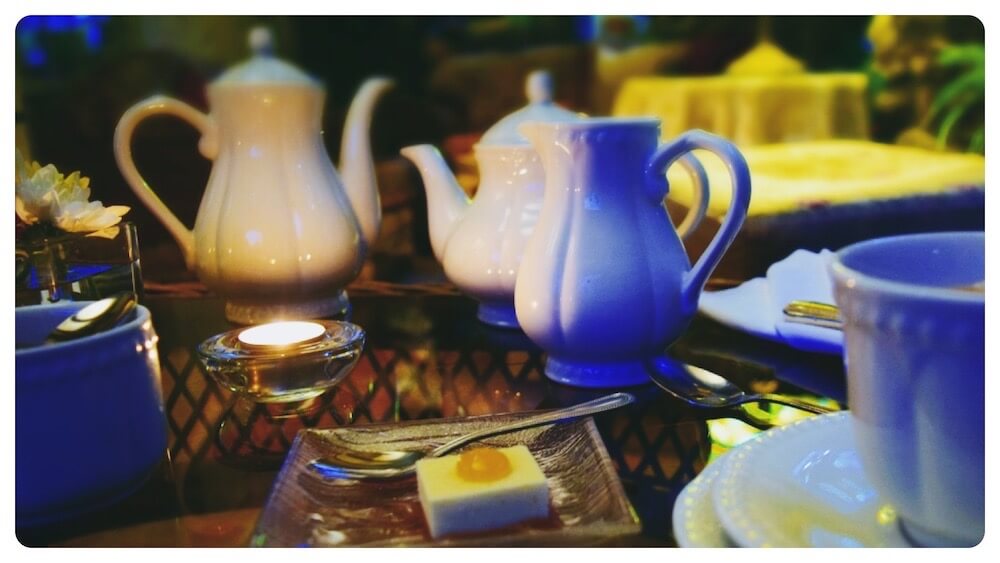Exploring the Culture of High Tea
With Christmas fast approaching, Kenny and I managed to sneak off to the Roman Camp Hotel in Callander for a luxury afternoon tea.
High Tea is an old-fashioned British concept, still very popular across Scotland.
This blog is for anyone wondering what High Tea is. We also discover if it merits being featured in our English language school food and drink activities. (Bearing in mind we often take you for an alternative tour of British culture).

An Introduction to High Tea
Be warned, this video contains a whole lot of cake-eating.
BuzzFeed Video explores the topic of Afternoon Tea | YouTube

Learn English and British Culture | High Tea – the History
For those who don’t know, ‘High Tea’ is very British, and a relatively formal affair.
Traditionally, it was a fairly simple selection of sandwiches, scones, and cakes served midafternoon in large ancestral houses.
The kind of mansion houses with servants (now mostly National Trust properties), which were big enough for the various family/guests to disperse for the day across the vast grounds on various outdoor activities such as hunting, walking, riding, gardening, fishing, and painting.
It Was Posh
The household would reconvene mid-afternoon, warming themselves in front of a fire. Then revive themselves with a selection of hot teas and cold snacks that the maids had laid out for them (presumably sharing aspects of their leisurely day as they waited for the slightly more interesting cocktail hour).
After which they would change into something less comfortable to tackle all the formalities of an evening meal.
A hard life, I’m sure you would agree. (And one only familiar to me from being a P.G. Wodehouse fan)

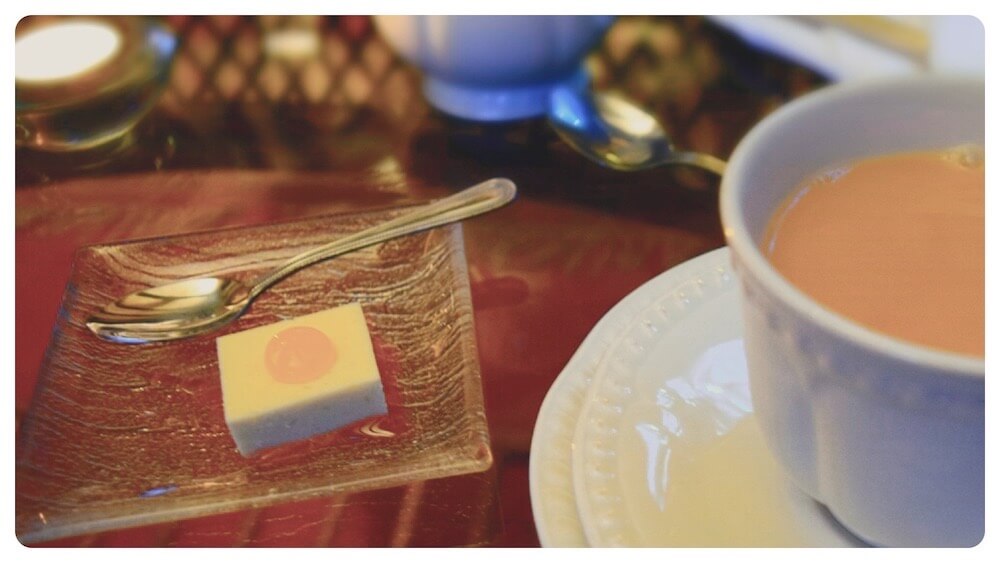
High Tea at the Roman Camp Hotel
High Tea for All
This extra meal, known as High Tea or Afternoon Tea, is something that a few grand hotels across Scotland now specialize in.
Such hotels open their doors for non-guests to sample the good life in the form of a luxury afternoon combining silver-service waiting staff, copious pots of tea, and a parade of small and plentiful tempting treats.
It is less expensive and entails (on the part of the guests at least) less formality than a full evening meal would at such a top establishment.
Thus hotels can monetize quiet hours – and the community can treat themselves.
What Does One Wear to High Tea?
Whatever you like!
In Scotland, High Tea isn’t necessarily a dress-up occasion – unless you want to.
The Roman Camp assured me on the phone that it was okay to come to their afternoon tea in walking boots – as we were planning a hike first (to build up a good appetite), but in the end, it was a rainy day and we chose to be lazy.
Many of Scotland’s oldest and nicest hotels are in outdoor sports locations and you’ll be surprised how many muddy guests or (sea-soaked guests) wander into quite fancy locations.
(It’s even a sign of wealth – the country class can show up in old gardeing clothes).
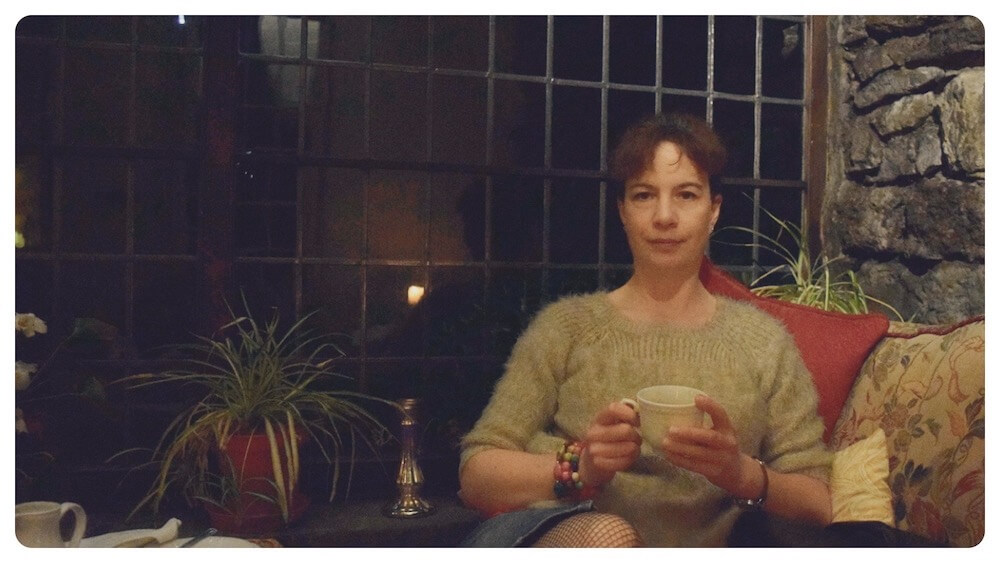
Your English teacher Ruth enjoying High Tea

So How Was High Tea?
To be entirely honest, High Tea is a culture that neither Kenny nor I are used to.
While many people in our circumstances seem to get a kick out of this style of activity, neither of us was completely convinced by the elements of performance it entailed.
It felt strange being waited on so attentively or sitting about in the afternoon!
When being done as tradition dictates, high tea itself is a bit of an odd blend of sparseness, simplicity, and excess. Possibly celebrating the worst aspects of British food and culture. Sandwiches and silver is an odd combo, considering how well sandwiches work at a picnic.
High Tea should feel like a luxuriously indulgent treat, but in reality, it felt rather wasteful (is it just me that doesn’t want to eat so many cakes in one meal?)

Kenny looking smart for High Tea
How Was the Food?
To begin with, we give the Roman Camp a bit of homework, as I eat gluten-free, and Kenny and I are both vegetarian.
We’d phoned ahead and they coped superbly with both requirements – I was particularly delighted by my fresh GF scone!
The truffle and parmesan taster we had to start was divine: it set my hopes and expectations sky high! Such layers of flavor, such mysteries … what a dream! (Give me another, and a crisp glass of white wine to complement it!).
While the rest of the tea that followed was all good enough quality, it fell a bit flat after such an amazing start.
I wanted to cry out, ‘Free the chef!’
Why waste skill like that on sandwiches?
“I wanted to cry out, ‘free the chef!’
and
‘Why waste skill like that on sandwiches?”
Ruth, 2019

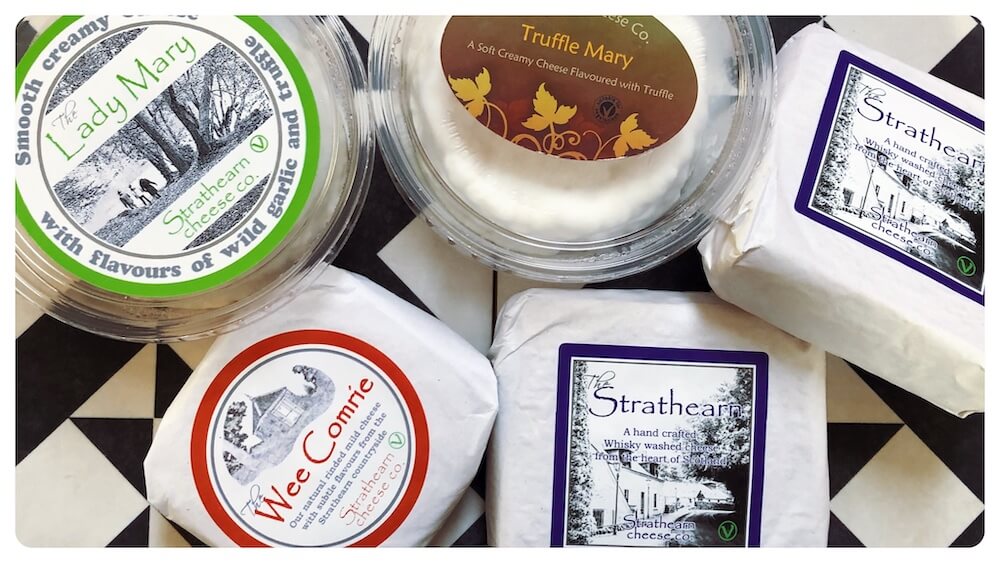
Strathearn Cheese
Our region has so much beautiful local produce, a High Tea not showcasing it is a wasted opportunity.
English Language School Food and Drink
Scotland produces such amazing cheeses and local produce, and while a traditional high tea, cramped by its own pretensions can absorb them as quality ingredients, it doesn’t really show them off unfettered.
I guess the high tea experience as a whole is more about sampling an unchanging, old-fashioned, decadent lifestyle for a day – and it is still loved exactly because it doesn’t change much.
High Tea is Not for Me
However, if (like me) you are all about learning something new about the food you eat, as you eat then it is probably it is probably worth saving much harder and being let loose – for that first mouthful told me that there’s a chef in there who’ll rock your world, and I’d pick unknown (and potentially sublime) over the weight of tradition any day.
What About for Learning English?
Throughout our language holidays, we choose food and drink experiences that promote tasty ingredients over outdated ‘British’ traditions any day.
Some language schools even confuse promoting British traditions with enjoying a cultural experience.
They are not the same – so pick your English language holiday wisely.
Scottish food culture is cosmopolitan, based on friendly old-fashioned hospitality.
I was glad that the restaurant experience felt less stuffy than I was expecting but I don’t think High Tea is a part of Scottish culture that I feel any excitement about showing off.
A Charming Time of Year
See for Yourself, on a Conversation Holiday in Scotland!
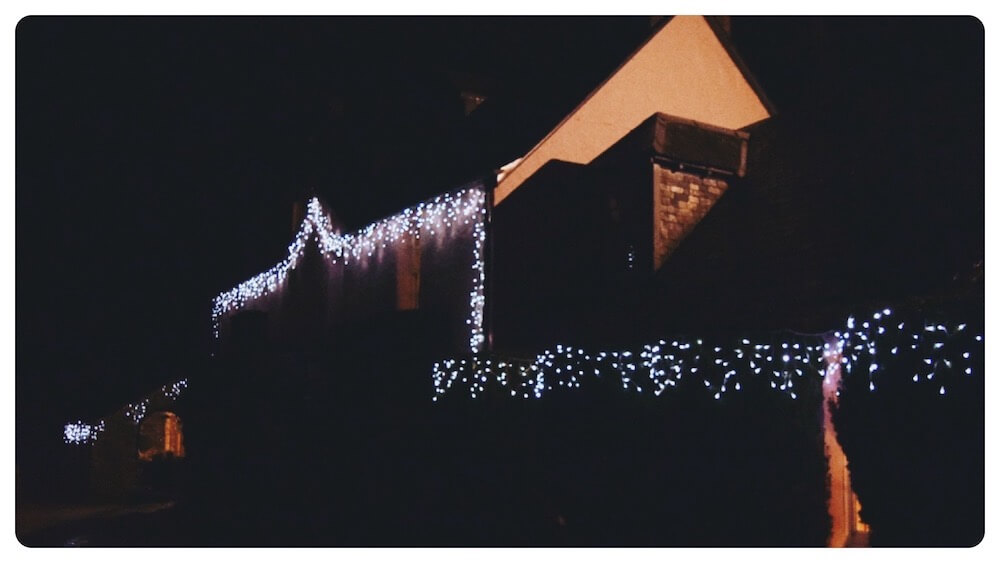
The Roman Camp Hotel by night


